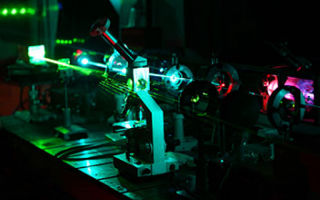A recent report from the market-analysis firm Research in China suggests that China’s position in the worldwide laser marketplace, both as a consumer and a marketer of laser technology, continues to grow.
According to the study, Global and China Industrial Laser Industry Report, 2017-2021, of the total worldwide 2016 industrial-laser market, estimated at US$3.16 billion, the Chinese market accounted for some 17.7 percent, or roughly US$0.56 billion (¥3.68 billion). The Chinese market value represented an 11.7 percent year-to-year gain, outstripping even the healthy 10.2 percent increase logged by the global industrial-laser market for 2016. And, according to the report, that pattern could continue—such that China could represent more than 20 percent of the global laser market in five years.
Driving forces
The study cites a number of factors affecting the global industrial-laser market generally and China’s participation in the market in particular:
- Mergers and acquisitions. The worldwide market in 2016 continued the broad pattern of consolidation that has characterized the photonics market over the past few years. For China in particular, the marquee deals cited by the recent study include the merger of Chutian Laser with Unity Laser in March 2016 and the purchase of the Canadian fiber company CorActive HighTech in November by China’s biggest laser producer, Han’s Laser. These transactions, the report notes, took place against a backdrop of other global M&A and reorganization activity (such as Coherent’s acquisition of Rofin-Sinar, completed in October), as companies sought to gain market advantage in the face of sharper domestic and international competition.
- Laser displays. The rising demand for global micro-processing—driven, according to the study, by increases in the laser TV and mini-laser digital-projector markets—spurred demand gains of some 35 percent from the micro-processing market, especially in excimer lasers.
- Fiber lasers. China continues to make significant strides in fiber laser technology, according to the market report. These advances—including the unveiling of new China-built 12-kW and 20-kW fiber lasers in 2016—have, the report notes, reduced demand from China for imports of such lasers.
- EUV. The report suggests that extreme-ultraviolet technology is “advancing toward mass production and application,” and that semiconductor companies have boosted orders of lasers for EUV lithography systems as a result.
Global players
While the report highlights strong growth in the Chinese market for industrial lasers, China itself is—at least at present—not a dominant player in the global business. The country’s biggest industrial-laser supplier, Han’s Laser, accounts for a whopping 45 percent of the Chinese market, but supplies less than 5 percent of worldwide demand, according to the report. By contrast, the study estimates that two global integrated firms, TRUMPF and IPG, together owned more than 50 percent of the global industrial-laser market, and a third, Coherent (including the operations picked up in the Rofin acquisition), accounted for some 10 percent.
One other interesting trend highlighted by the market report is expected growth in the ultrafast-laser market segment. The study projects that the global market for these lasers could expand from US$450 million in 2015 to some US$1.5 billion in 2021, logging compound annual growth of 22.2 percent—a figure that, according to the report, will beat the average growth rate of the industrial-laser industry overall.
More information on the Global and China Industrial Laser Industry study can be found at http://www.researchandmarkets.com/publication/m4u9zpb/4163707.
Correction: An earlier version of this story said that semiconductor companies had boosted orders of “EUV lasers.” This has been changed to “lasers for EUV lithography systems.”


